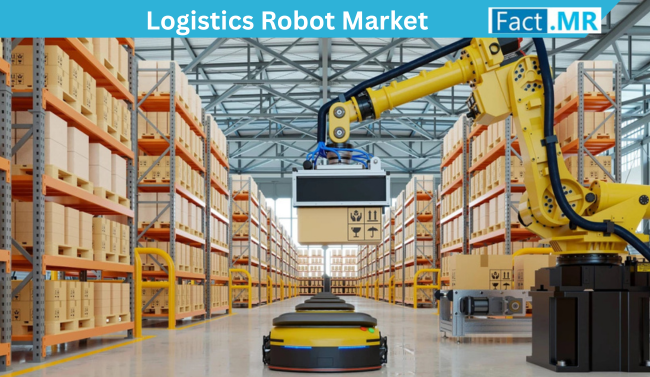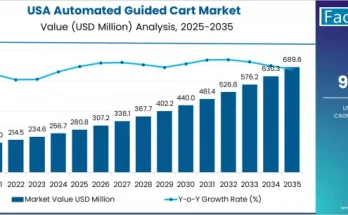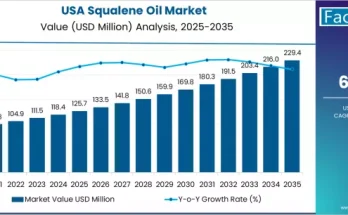The logistics robot market is transforming the traditional supply chain landscape by introducing high levels of automation, precision, and intelligence. As organizations confront growing consumer expectations for faster delivery, tighter inventory control, and real-time visibility, logistics robots have emerged as indispensable tools for achieving operational excellence.
Logistics robots, including Automated Guided Vehicles (AGVs), Autonomous Mobile Robots (AMRs), robotic arms, and aerial drones, are being deployed across a range of logistics activities. These include warehousing, transportation, sorting, packaging, inventory tracking, and last-mile delivery. Their ability to reduce human error, lower labor dependency, and increase processing speed has made them critical assets in highly competitive markets.
As supply chains become increasingly complex, organizations are adopting advanced robotic technologies to enhance efficiency, reduce human error, and minimize operational costs. Logistics robots, once limited to basic tasks, are now integrated with AI, IoT, and machine learning capabilities, enabling them to handle sophisticated functions with greater accuracy and adaptability.
The logistics robot market is undergoing a substantial transformation, fueled by rising demand for automation across global supply chains. The market is projected to grow from US$ 7.12 billion in 2023 to US$ 22.7 billion by 2033, expanding at a CAGR of 12.3% during the forecast period. This significant growth reflects the critical role of robotics in optimizing warehousing, transportation, and overall logistics operations to meet modern business demands.
Logistics Robot Market Overview:
Logistics robots are designed to automate repetitive and labor-intensive tasks within logistics and warehousing environments. These tasks include picking, packing, sorting, palletizing, inventory management, and inspection. The growing reliance on logistics robots stems from multiple factors:
- Surging E-Commerce Demand: Online shopping has created an urgent need for faster, more efficient order fulfillment and inventory management systems.
- Workforce Challenges: A shortage of skilled labor and rising labor costs are encouraging companies to automate tasks traditionally performed by humans.
- Enhanced Robotics Capabilities: Continuous advancements in automation technology have improved robot performance, scalability, and return on investment.
- Focus on Worker Safety: Robots are increasingly used to perform hazardous or physically demanding tasks, contributing to improved workplace safety.
Between 2018 and 2022, the logistics robot market grew at an 8.9% CAGR, reflecting steady adoption across various industries. From 2023 to 2033, the pace of growth is expected to accelerate to 12.3% annually, highlighting the increasing recognition of robotics as a critical enabler of modern supply chain agility and resilience.
Regional Insights
The logistics robot market demonstrates varying levels of adoption across regions, driven by technological readiness, infrastructure development, and labor market dynamics.
- Europe holds the largest market share, accounting for 25.2% in 2023, with a market valuation of approximately US$ 1.79 billion. Countries like Germany are at the forefront due to strong industrial sectors and an emphasis on automation in logistics.
- North America follows closely with a 21.2% share, valued at around US$ 1.51 billion in 2023. This growth is supported by a well-established technology ecosystem and increasing investments in warehouse automation.
- China, also commanding a 21.2% share, mirrors North America’s market size at US$ 1.51 billion. China’s industrial growth and national push toward smart manufacturing and intelligent logistics are major contributors.
Together, these three regions account for 67.6% of the global market, indicating a strong concentration of demand in developed and rapidly industrializing economies.
Key Trends & Forecast:
Several transformative trends are reshaping the logistics robot market, signaling new opportunities and technological advancements over the coming decade:
- Integration of AI and IoT
Robots embedded with artificial intelligence and IoT sensors are capable of real-time data processing and autonomous decision-making. This makes logistics operations more adaptive, efficient, and responsive to dynamic supply chain environments.
- Growth of Collaborative Robots (Cobots)
Cobots are designed to work alongside human workers, assisting them in repetitive or physically demanding tasks. Their safety features and flexibility are making them increasingly popular in logistics settings, especially where full automation is not feasible.
- Expansion of Last-Mile Delivery Robots
Autonomous delivery robots are gaining traction in urban areas, offering innovative solutions for last-mile delivery challenges. They help reduce delivery times, lower costs, and improve customer satisfaction.
- Sustainability and Energy Efficiency
Companies are now prioritizing environmentally friendly and energy-efficient robotic systems. These not only reduce carbon footprints but also bring long-term operational savings.
- Cloud-Based Robotic Management
The rise of cloud computing enables remote monitoring and control of robotic systems. Cloud integration supports predictive maintenance, performance analytics, and centralized logistics coordination.
As these trends unfold, the logistics robot market is expected to evolve rapidly, driven by ongoing innovation and increased adoption across supply chain segments.
Applications & End-Use Outlook:
Logistics robots are widely applied across industries and functions, each leveraging automation to achieve specific operational objectives.
- Packaging and Palletizing
Robots equipped with vision systems and robotic arms automate packaging and palletizing tasks. This ensures consistent output, reduces labor dependence, and accelerates order processing times.
- Inspection and Quality Control
Robots play an increasingly vital role in inspecting goods for defects or inconsistencies using advanced imaging and sensor technologies. This enhances product quality and reduces returns or recalls.
- Warehouse Automation
From automated guided vehicles (AGVs) to robotic shelving systems, warehouse robots are improving storage efficiency and enabling faster product retrieval. They streamline inbound and outbound logistics while minimizing human intervention.
- Retail and E-Commerce
With a 22.5% market share in 2023, the retail and e-commerce sectors are among the biggest adopters of logistics robots. Robots in these industries handle tasks like order picking, sorting, and returns processing, helping businesses meet same-day or next-day delivery expectations.
- Automotive and Industrial Manufacturing
In these sectors, robots move components across the shop floor, manage inventories, and support just-in-time manufacturing processes. This reduces downtime and ensures optimal resource utilization.
- Healthcare and Pharmaceuticals
Hospitals and pharmaceutical companies use logistics robots to transport sensitive materials, such as medications and lab samples, ensuring safety, speed, and accuracy in medical environments.
This diverse range of applications underlines the adaptability of logistics robots and the broad scope of their utility across modern supply chains.
Competitive Landscape: Logistics Robot Market
The logistics robot market is characterized by a mix of established automation firms and emerging startups that offer specialized solutions. Companies compete on the basis of:
- Technology innovation
- System integration capabilities
- Customization and flexibility
- Energy efficiency and sustainability
- After-sales support and maintenance
Leading players are investing heavily in R&D to enhance robotic intelligence, speed, and connectivity. Strategic collaborations, mergers, and acquisitions are also shaping the competitive dynamics, enabling companies to expand their portfolios and market reach.
In addition, software solutions that manage and optimize robot workflows are becoming integral to overall offerings, indicating a shift toward unified robotic ecosystems in logistics.
Challenges and Constraints
Despite the positive outlook, certain challenges could restrain market growth:
- High Initial Costs: The upfront investment required for robotic systems can be a barrier, especially for small and medium-sized enterprises.
- Integration Complexity: Integrating robots into legacy systems or multi-vendor environments can be technically complex and resource-intensive.
- Cybersecurity Risks: As robots become increasingly connected, the risk of cyberattacks and data breaches rises, necessitating robust security frameworks.
- Regulatory Hurdles: Autonomous robots, especially those used in public spaces (e.g., delivery bots), face regulatory scrutiny related to safety, liability, and compliance.



